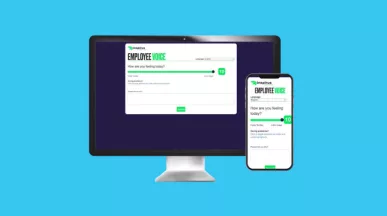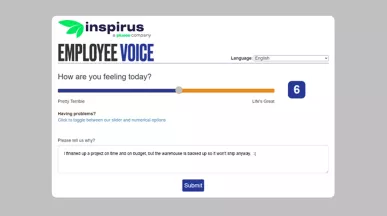Trending Benefits that Improve the Employee Experience and Reduce Turnover

By Kelley Briggs
Many HR teams are reviewing employee benefit programs to find new ways to support employees, keep them happy and engaged, and attract new talent. Offering competitive and comprehensive employee benefits are a key component of an employee motivation strategy, and helps employers attract better (and more) talent, as well as reduce employee turnover.
Job seekers and employees are placing greater importance on mental health and want to work for organizations that share their values. A study published by Forbes showed that 33% of workers ranked financial wellness as their main problem area, while 24% rated mental and emotional health as their top area of concern. This and other research confirms that mental health benefits are no longer a “nice to have,” they are a must. And when they are in place, encourage employees to participate, making sure they feel psychologically safe to do so.
Here’s a look at other benefit offerings human resources can consider adding or expanding upon, to take better care of their employees and create a positive employee experience. But let's be clear: these are ideas for consideration only — not every company can provide every benefit. Organizations need to craft a benefit package that works for their specific organizational needs and budget. Here we go:
Day-to-Day Perks
Here are some low-cost perks and trending benefits employers can offer to keep employees motivated and make day-to-day life a little easier.
Employee discounts. Create or expand an employee discount program that offers exclusive deals available only to your employees — including a mix of deep savings and free resources. You might consider offering discounts on mortgage loans, car purchases, restaurants, clothing, haircuts, and many retailers and services. You may also decide to give employees access to streaming music services — and headphones to use at their workstations — to help employees focus and manage stress.
Employee recognition programs. Thanking an employee for their work privately or during a team meeting is great, but an employee recognition program can have an even greater impact on individuals and your team culture. These programs — especially when supported with the right technology — can make team members separated by distance feel closer and more connected. CNBC recently published a fascinating article that reported employees are “craving meaningful connection at work. Without it, they’re willing to quit.”
Professional career development. Fostering learning and skill-building helps support employees and keeps them engaged longer. And career development has grown massively in importance in recent years. According to SHRM, more than half (65%) of employers say professional career development benefits are important now, compared to 37% in 2020/2021 and 51% prior to the pandemic.
Identity theft protection. According to recent reports from the Federal Trade Commission, there were some 1.4 million reports of identity theft in 2021. The chances of becoming an identity theft victim grow year after year. Help employees protect their identity with discounts on ID theft protection services or reimbursements for their expenses.
Home office budget. With more of us working remotely than ever before, we want to be comfortable. Consider a stipend to help create the perfect workplace conducive to productivity. Some employers opt for a small monthly payment while others offer a large one-time lump sum, sometimes with length of service requirements.
On-site services: For employees working on-site, offering convenience services at a fair price can help support work/life integration by saving employees’ time and helping them cross something off their personal task list. Common services include car detailing, oil and tire changes, dry cleaning, and laundry.
Financial Programs
Because we know from the research that financial wellness is the top area of concern for employees, organizations can address this need — and have a competitive advantage — by offering education and services.
Budget planning workshops. Many employees lack basic education and skills for financial health. Partner with experts to host regular workshops, which can be held virtually and recorded for on-demand playback.
Savings incentive programs. Rewarding employees for saving money — for an emergency fund, for a vacation, for college, or just for a rainy day — helps show your team that you’re invested, literally, in their financial wellness, long term.
Retirement planning. This may be an extension of the retirement savings plan you already offer, or you may opt to partner with a third-party vendor for more intensive retirement savings planning.
Mental and Emotional Support
Mental healthcare is something nearly everyone needs right now. A Paychex survey revealed that around 51% of respondents said their mental health worsened during the pandemic and one-third say they struggle to achieve their typical level of productivity due to their mental health.
Mental healthcare services. At a minimum, your employees deserve basic mental health coverage (e.g. counseling or talk therapy). To compete with other employers and foster a more supportive culture, many employers offer expanded mental health coverage, including advanced therapies, medication and access to in-patient programs when needed.
Apps and subscriptions. Many people enjoy using self-help tools (like Headspace, Calm, etc.) to support their mental health. These apps provide meditations, mindfulness practices, online mental health classes and workshops, or mental health podcasts. Reimbursing employees for subscription fees and other costs as an expansion of your traditional healthcare coverage is a great way to take care of your team.
Time off. Taking time off from work is essential to managing stress and maintaining good mental health. Offer floating mental health days included in PTO is a must. Forbes reports that many employers are taking it a step further with vacation mandates, which means they are tracking time off usage more closely or implementing periodic company-wide closures so everyone can take a break at the same time.
Physical Fitness and Longevity
When employees have easier access to physical fitness, they may be better able to manage stress, maintain focus, and show up ready to contribute.
Gym reimbursements. Perhaps the most common perk in this category is reimbursements for fitness-related expenses, including gym or sports team membership, fitness classes, or home gym equipment.
Healthy lifestyle programs. Offer a variety of programs to support a healthy lifestyle—like step goals and smoking cessation programs — and promote them on your employee engagement platform. The Spotlight area of Connects is perfect for this example!
Wellness challenges. Allow employees to earn points on your employee engagement platform for participation for participating in wellness programs and challenges.
Personal and Family Benefits
Perks and programs that help employees support themselves and their families are attractive to job seekers and can help improve the employee journey, keeping them employees happy and productive.
Family care benefits. SHRM reports that 70% of employers say family care benefits are important to offer, up from 52% prior to the pandemic. This is another benefit that used to be “nice to have” and is now imperative.
Childcare and elder care. Helping employees balance their roles as caregivers is a valuable perk that allows people to focus on work during work hours, rather than worrying about their families. Programs or reimbursements can help put their minds at ease.
Pet insurance. Our animal companions are also a part of our families and they need support, too. Offering discounts or reimbursements on pet insurance, veterinary care, and behavioral training can help employees take even better care of the furry and feathered members of their families.
What Benefits Employees, Benefits the Organization
As this list demonstrates, there are many ways to support your employees with benefits beyond basic medical and dental coverage. To offer benefits and perks that truly meet your employees’ needs, gain feedback about what’s important to them and their preferences. Use this valuable information to create the framework for the benefits you include as part of your employee engagement strategy. And then listen to their feedback to see if what you’re doing meets — and hopefully exceeds — their expectations.





